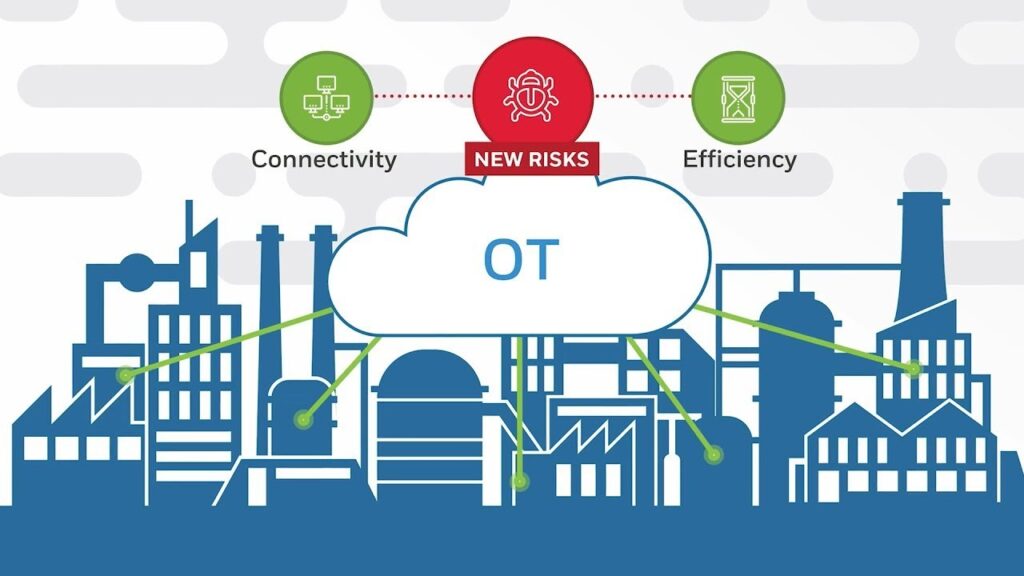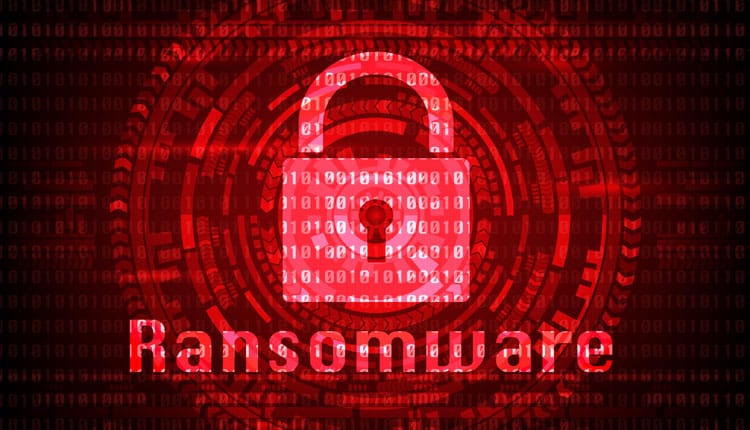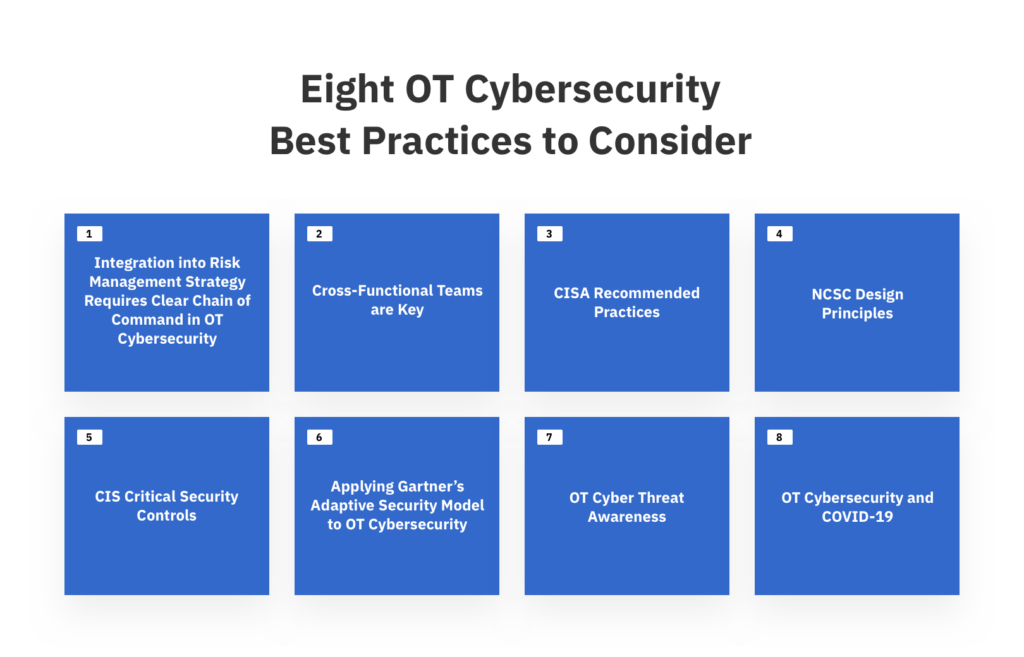
The digital transformation of critical infrastructure has brought unprecedented efficiency and capability. However, it also exposes vulnerabilities that cybercriminals are quick to exploit. Operational Technology (OT) Cybersecurity is the linchpin for protecting critical infrastructure, from energy grids to transportation networks, as they increasingly rely on connected systems. Looking ahead to 2025, OT cybersecurity must evolve to address sophisticated threats while ensuring operational resilience.
What Is Operational Technology (OT) Cybersecurity?

Operational Technology refers to hardware and software systems that monitor and control industrial equipment, assets, and processes. Unlike Information Technology (IT), which focuses on data, OT ensures the safety, reliability, and functionality of critical physical systems.
- Examples of OT Systems:
- Power grids and energy distribution networks
- Manufacturing plants and industrial automation
- Water treatment facilities
- Transportation systems (e.g., railways and airports)
OT cybersecurity safeguards these systems against cyber threats that could disrupt operations, compromise safety, or result in catastrophic failures.
Why Is OT Cybersecurity Critical for Infrastructure?

Critical infrastructure forms the backbone of modern society, supporting essential services like electricity, water, and transportation. A breach in OT systems can have devastating consequences, from prolonged outages to public safety risks.
- Key Risks in OT Cybersecurity:
- Physical Impact: Cyberattacks on OT can cause physical harm, such as power outages or equipment malfunctions.
- Economic Losses: Downtime in critical systems can lead to financial losses and supply chain disruptions.
- National Security Threats: Critical infrastructure attacks are often state-sponsored, aiming to destabilize economies or societies.
The intersection of OT and IT further complicates the security landscape. As more OT systems become internet-connected, they inherit vulnerabilities traditionally associated with IT systems.
Emerging OT Cybersecurity Challenges in 2025
As we advance into 2025, OT cybersecurity faces an array of challenges driven by technological and geopolitical shifts.

- Rise in Ransomware Targeting OT: Cybercriminals increasingly target OT systems with ransomware, knowing the high stakes can lead to quicker payouts.
- Increased IoT Integration: The proliferation of Internet of Things (IoT) devices in OT environments expands the attack surface.
- Aging Infrastructure: Many critical OT systems were not designed with cybersecurity in mind, making them inherently vulnerable.
- Sophistication of Threat Actors: State-sponsored actors and organized cybercriminal groups employ advanced persistent threats (APTs) to exploit OT vulnerabilities.
Innovations Shaping OT Cybersecurity in 2025

The challenges of OT cybersecurity require innovative solutions tailored to the unique needs of critical infrastructure.
- AI and Machine Learning: Real-time anomaly detection powered by AI can identify threats before they escalate.
- Zero Trust Architecture: Applying Zero Trust principles to OT ensures constant verification of users and devices accessing critical systems.
- Blockchain for Secure Data Exchange: Blockchain technology ensures data integrity and secure communication between OT devices.
- Digital Twins: Simulating OT environments enables safe testing of security measures without disrupting operations.
- Post-Quantum Cryptography: As quantum computing evolves, it’s vital to adopt encryption methods resilient to quantum-based attacks.
Best Practices for Securing OT Systems in 2025

Organizations can mitigate risks by adopting comprehensive cybersecurity strategies for OT systems.
- Conduct Regular Risk Assessments: Identify vulnerabilities and prioritize remediation efforts based on potential impact.
- Implement Network Segmentation: Isolate OT networks from IT and public networks to minimize exposure.
- Invest in Threat Intelligence: Stay informed about emerging threats and adapt defenses accordingly.
- Adopt Multi-Factor Authentication (MFA): Strengthen identity verification for OT system access.
- Provide Cybersecurity Training: Educate employees on best practices and the unique challenges of OT environments.
- Patch and Update Systems: Regularly update software and firmware to address known vulnerabilities.
The Role of Government in OT Cybersecurity
Governments play a pivotal role in shaping OT cybersecurity through regulations, funding, and collaboration.
- Cybersecurity Standards: Frameworks like NIST Cybersecurity Framework and IEC 62443 provide guidelines for securing OT systems.
- Public-Private Partnerships: Collaboration between government agencies and private organizations enhances information sharing and response capabilities.
- Incentivizing Investments: Grants and tax incentives encourage companies to prioritize OT cybersecurity upgrades.
In 2025, increased global cooperation is essential for tackling state-sponsored cyber threats targeting critical infrastructure.
Future Trends in OT Cybersecurity
As technology advances, the OT cybersecurity landscape will continue to evolve. Here are key trends to watch:
- AI-Driven Threat Hunting: Automation will enhance the speed and accuracy of identifying and responding to threats.
- Resilient Systems Design: Future OT systems will incorporate cybersecurity from the ground up, rather than as an afterthought.
- Collaboration Across Sectors: Industries will increasingly collaborate on cybersecurity standards and best practices.
- Focus on Supply Chain Security: Ensuring the integrity of third-party vendors and components becomes a priority.
The convergence of digital and physical systems brings immense benefits but also significant risks. Operational Technology (OT) Cybersecurity is pivotal to securing critical infrastructure and ensuring its resilience against evolving cyber threats. As we move toward 2025, adopting advanced technologies, fostering collaboration, and prioritizing cybersecurity by design will empower organizations to stay ahead in the battle to protect essential services.
FAQs
What is the difference between IT and OT cybersecurity?
IT cybersecurity focuses on protecting data and networks, while OT cybersecurity protects physical systems and processes critical to infrastructure.
How do ransomware attacks impact OT systems?
Ransomware attacks can disrupt operations, damage equipment, and pose safety risks by locking access to critical OT systems.
Can legacy OT systems be secured?
Yes, but it requires tailored strategies like network segmentation, risk assessments, and compensating controls to address inherent vulnerabilities.
What role does AI play in OT cybersecurity?
AI enhances OT cybersecurity by enabling real-time anomaly detection, predictive threat modeling, and automated responses.
How does the Zero Trust model apply to OT cybersecurity?
Zero Trust ensures that no device or user is trusted by default, requiring continuous verification to access OT systems.
Are there regulations specifically for OT cybersecurity?
Yes, frameworks like NERC CIP (North America), NIS Directive (EU), and IEC 62443 provide guidelines for securing OT environments.



